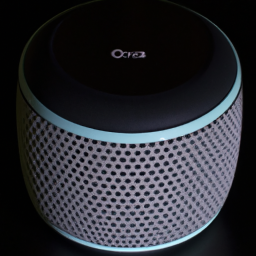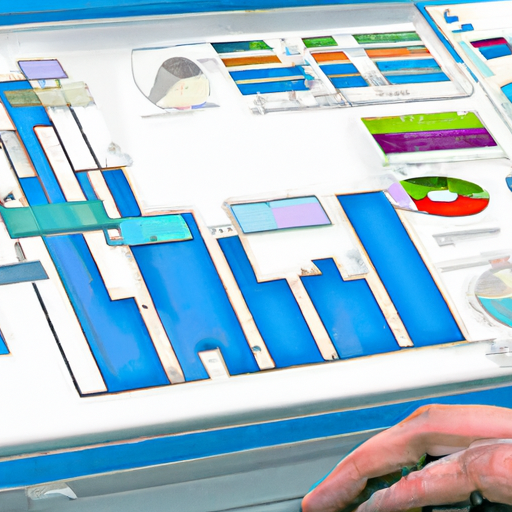Restaurant Technology Trends
If you’re a food lover or a restaurant owner, you’ll want to pay attention to the latest trends in restaurant technology. From online ordering systems to contactless payment methods, the industry is continuously evolving to enhance the dining experience. In this article, we’ll explore some of the emerging restaurant technology trends that are revolutionizing the way we eat out. So, grab a seat and get ready to discover how technology is changing the game for restaurants everywhere.
Table of Contents
Online Ordering
In today’s fast-paced digital world, online ordering has become increasingly popular among consumers. Whether you’re craving your favorite meal from a local restaurant or just don’t feel like cooking, online ordering allows you to easily browse menus, customize your order, and have it delivered right to your doorstep.
Mobile Apps
One of the most convenient ways to order food online is through mobile apps. With just a few taps on your smartphone, you can explore various restaurant options, check out their menus, and place your order effortlessly. Mobile apps not only provide a seamless user experience but also often offer exclusive deals and discounts for app users, making your dining experience even more affordable.
Third-Party Delivery Services
Third-party delivery services have revolutionized the way we order food. With companies like Uber Eats, DoorDash, and Grubhub, you can have food from your favorite restaurants delivered to your doorstep with just a few clicks. These services partner with a wide range of restaurants, giving you access to a diverse selection of cuisines and options that cater to various dietary preferences.
Self-Service Kiosks
self-service kiosks are another convenient way to order food online. These interactive touch-screen devices are typically available in restaurants and allow you to browse the menu, customize your order, and make payment without the need for human interaction. Self-service kiosks are particularly popular in establishments where speed and efficiency are valued, such as fast-food chains and quick-service restaurants.
Contactless Payments
With the rise of contactless payment options, making transactions has never been easier or safer. By adopting contactless payment methods, restaurants can ensure a seamless and secure payment experience for their customers.
Mobile Payment Platforms
Mobile payment platforms have gained popularity in recent years, allowing customers to make payments using their smartphones. With platforms like Apple Pay, Google Pay, and Samsung Pay, you can simply tap your phone on a compatible payment terminal to complete your transaction. This eliminates the need for physical credit cards or cash, reducing contact and minimizing the risk of spreading germs.
Near Field Communication (NFC) Payments
NFC payments enable customers to make contactless payments by simply waving their payment device, such as a smartphone or a smartwatch, near a compatible payment terminal. By leveraging NFC technology, restaurants can offer a quick and secure payment option that enhances the overall dining experience and promotes a touch-free transaction process.
Tabletop Tablet Ordering
Tabletop tablet ordering has become increasingly popular in restaurants, offering a convenient and interactive way for customers to browse menus, place orders, and even make payments without the need for traditional paper menus or waitstaff assistance.
Digital Menu Tablets
Digital menu tablets are interactive devices placed on restaurant tables, providing customers with a visually appealing and user-friendly menu browsing experience. These tablets typically display vibrant images of various dishes, along with detailed descriptions and customizable options, allowing customers to explore the menu at their own pace.
Ordering and Payment Integration
With tabletop tablet ordering, customers can place their orders directly on the tablet, customizing their dishes to suit their preferences. Additionally, many tabletop tablets are integrated with payment systems, allowing customers to settle their bills without waiting for the attention of a server. This integration streamlines the ordering process, enhances accuracy, and reduces wait times.
Upselling and Cross-Selling Features
Tabletop tablets also offer upselling and cross-selling features that can benefit both customers and restaurants. These devices can suggest additional items or upgrades based on the customer’s order, increasing sales for the restaurant and potentially introducing customers to new and exciting menu options.
Reservation Management Systems
Reservation management systems have become essential tools for restaurants, providing efficient ways to manage reservations, optimize table seating, and enhance the overall customer experience.
Online Booking Platforms
Online booking platforms allow customers to easily make reservations at their preferred restaurants, eliminating the need for phone calls or physical visits. By offering online booking options, restaurants can streamline their reservation process and ensure a smooth and hassle-free experience for their customers.
Automated Table Management
With reservation management systems, restaurants can automate table management processes, allowing them to optimize table seating and allocate resources effectively. These systems provide real-time updates on table availability, wait times, and customer preferences, enabling restaurants to provide timely and personalized service.
CRM Integration
Integration with Customer Relationship Management (CRM) systems allows restaurants to gather valuable customer data, such as dining preferences and historical orders. By harnessing this information, restaurants can tailor the dining experience to individual customers, providing personalized recommendations and incentives to build customer loyalty.
Kitchen Automation
Kitchen automation technology has transformed the way restaurants operate behind the scenes. By adopting various automation systems, restaurants can streamline their kitchen workflows, improve order accuracy, and enhance the overall efficiency of their operations.
Kitchen Display Systems (KDS)
Kitchen Display Systems (KDS) replace traditional paper tickets by digitally displaying order details and instructions in the kitchen. This streamlines communication between the front of the house and the kitchen, reducing errors and ensuring orders are prepared efficiently. KDS also allow for easy tracking and prioritization of orders, improving overall kitchen productivity.
Order Routing and Tracking
Automation technology enables seamless order routing and tracking processes, ensuring that orders are sent to the appropriate kitchen stations and monitored throughout the preparation process. By eliminating manual order management, restaurants can reduce preparation times and improve overall order accuracy.
Inventory and Ingredient Management
Kitchen automation systems often integrate with inventory management software, providing real-time tracking of ingredients and notifying staff when supplies are running low. This helps restaurants avoid stockouts, reduce wastage, and optimize their ingredient ordering process.
Smart Inventory Management
Efficient inventory management plays a crucial role in the success of any restaurant. By adopting smart inventory management systems, restaurants can streamline their ordering and restocking processes, minimize food waste, and ensure they always have the necessary ingredients on hand.
Automated Ordering and Restocking
Smart inventory management systems can automatically generate orders based on predefined inventory thresholds. By utilizing historical sales data and demand forecasting algorithms, these systems can optimize order quantities and timing, reducing the likelihood of running out of stock or overstocking perishable items.
Real-Time Inventory Tracking
Real-time inventory tracking enables restaurants to monitor their inventory levels accurately and efficiently. By leveraging technologies like barcodes or RFID tags, inventory levels can be automatically updated as ingredients are used or received, providing a real-time snapshot of stock availability.
Integration with Point of Sale (POS) System
Integrating smart inventory management systems with the restaurant’s Point of Sale (POS) system offers significant benefits. This integration allows for seamless communication between inventory levels and sales transactions, enabling accurate tracking of ingredient usage and identifying any discrepancies. By ensuring alignment between inventory and sales data, restaurants can improve their data accuracy and make informed decisions regarding menu offerings and pricing.
Customer Feedback and Engagement
Maintaining a strong relationship with customers is vital for any restaurant. By leveraging technology, restaurants can engage with their customers, gather valuable feedback, and reward loyalty, ultimately creating a more personalized and satisfying dining experience.
Digital Feedback Surveys
Digital feedback surveys provide an efficient way to collect customer opinions and preferences. By sending surveys via email or through digital loyalty programs, restaurants can gather valuable insights on their customers’ satisfaction levels, identify areas for improvement, and address any concerns promptly.
Social Media Listening Tools
Social media listening tools enable restaurants to monitor online conversations about their brand, products, and services. By tracking mentions, reviews, and hashtags, restaurants can understand customer sentiment, identify trends, and promptly address any negative feedback or concerns raised on social media platforms.
Loyalty Programs and Personalization
Implementing customer loyalty programs allows restaurants to reward their customers for their continued patronage. By offering exclusive discounts, personalized offers, and special rewards, restaurants can foster customer loyalty and incentivize repeat visits. Additionally, loyalty programs provide valuable data on customer preferences and behaviors, enabling restaurants to further tailor their offerings to individual customers’ tastes.
Analytics and Business Intelligence
In the highly competitive restaurant industry, data-driven insights can provide a significant competitive advantage. By leveraging analytics and business intelligence tools, restaurants can gain valuable insights into their operations, customer behavior, and market trends.
Data Collection and Analysis
Analytics tools allow restaurants to collect and analyze vast amounts of data, ranging from sales transactions to customer demographics and feedback. By utilizing advanced analytics techniques, restaurants can identify patterns, trends, and relationships within their data, enabling them to make data-driven decisions and optimize their operations.
Sales and Revenue Reporting
Accurate sales and revenue reporting is essential for restaurants to monitor their financial performance, identify top-selling items, and measure the success of marketing campaigns. By centralizing sales data and automating reporting processes, restaurants can generate comprehensive reports with real-time insights, enabling them to make informed strategic decisions.
Demand Forecasting
By leveraging historical sales data and market trends, restaurants can employ demand forecasting techniques to predict future customer demand. This allows for better inventory management, optimized staffing levels, and enhanced operational efficiency. Demand forecasting can also aid in menu planning, helping restaurants focus on popular items and avoid potential food waste.
Robotics and Automation
Advancements in robotics and automation technology have penetrated the restaurant industry, offering opportunities to increase operational efficiency, reduce labor costs, and enhance the overall dining experience.
Automated Food Preparation
Robotic systems can take on repetitive and time-consuming tasks in the kitchen, such as food assembly or ingredient slicing, leading to increased efficiency and consistent quality. These systems can work alongside human chefs, freeing them up to focus on more creative aspects of food preparation.
Robotic Servers and Assistants
Robotic servers and assistants can automate certain tasks traditionally performed by waitstaff, such as delivering food or clearing tables. By employing these robots, restaurants can streamline their operations, reduce labor costs, and enhance the overall efficiency of the dining experience.
AI-powered Customer Service
Artificial Intelligence (AI) technology has the potential to revolutionize customer service in restaurants. Chatbots and virtual assistants can handle customer inquiries, offer recommendations, and take orders, providing a seamless and personalized service experience. AI-powered systems can learn from customer interactions over time, continuously improving their ability to meet customer needs and preferences.
Virtual and Augmented Reality
Virtual and augmented reality technologies offer exciting opportunities for restaurants to engage customers in immersive dining experiences and enhance their marketing efforts.
Virtual Dining Experiences
Virtual dining experiences provide customers with an opportunity to explore a restaurant’s ambiance and offerings virtually before making a reservation. By offering virtual tours or 360-degree virtual reality experiences, restaurants can showcase their atmosphere, decor, and dining spaces, helping customers make informed decisions and build anticipation for their visit.
AR Menu Visualization
Augmented Reality (AR) can enhance the menu browsing experience by overlaying digital content onto physical menus. By using smartphone or tablet cameras, customers can view interactive dish presentations, nutritional information, and even see how a dish would look on their table. This AR technology adds a dynamic and engaging element to the dining process, making it more interactive and memorable.
Interactive Marketing Campaigns
Virtual and augmented reality technologies provide new avenues for restaurants to create interactive and immersive marketing campaigns. By developing AR games, virtual competitions, or unique dining experiences, restaurants can attract and engage customers in innovative ways, generating buzz and excitement around their brand. These interactive marketing campaigns can leave a lasting impression on customers and encourage them to share their experiences on social media, further amplifying their reach.
In conclusion, the rapid advancement of technology has significantly impacted the restaurant industry, offering a wide range of innovative solutions to streamline operations, enhance customer experiences, and adapt to changing consumer demands. From online ordering platforms to robotics and automation, restaurants now have access to a multitude of tools and technologies that can drive efficiency, increase revenue, and create memorable dining experiences. By embracing these technological trends, restaurants can stay ahead of the competition and cater to the evolving expectations of today’s tech-savvy consumers.





